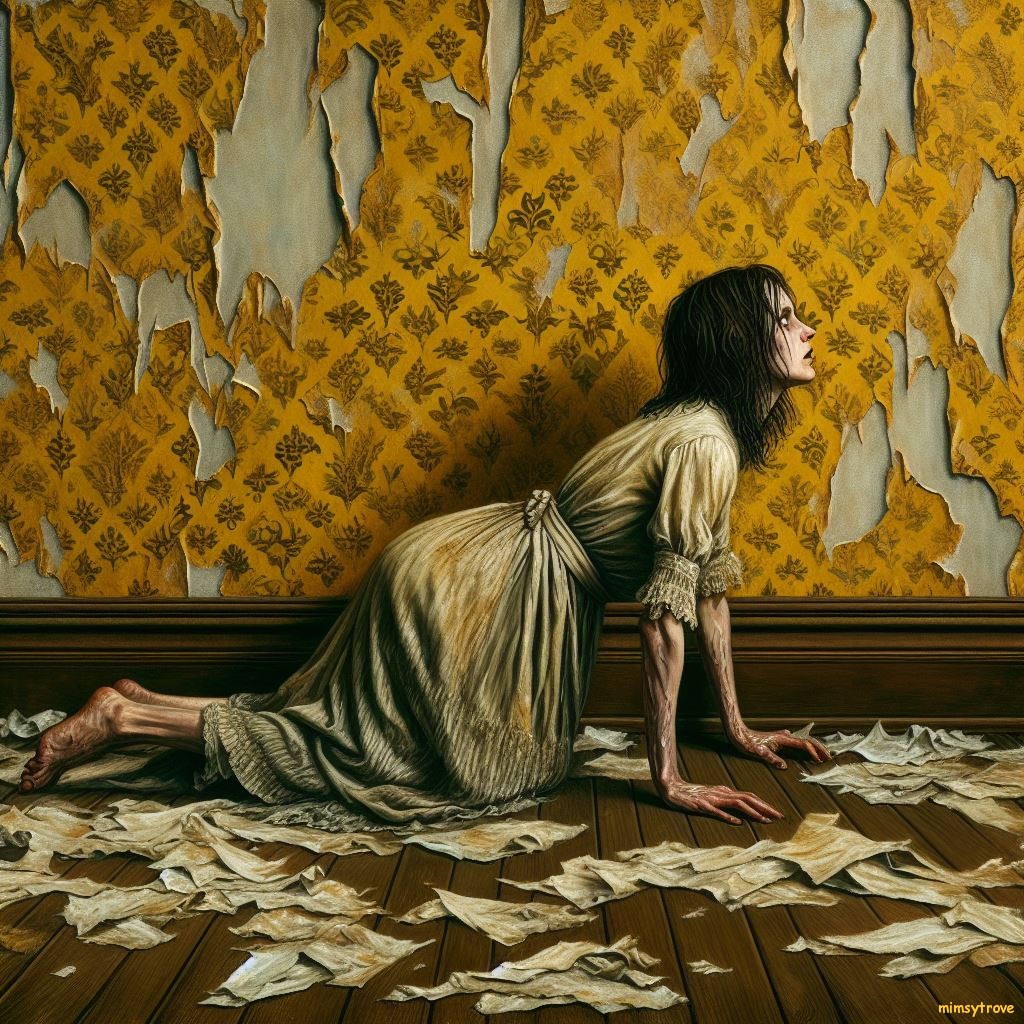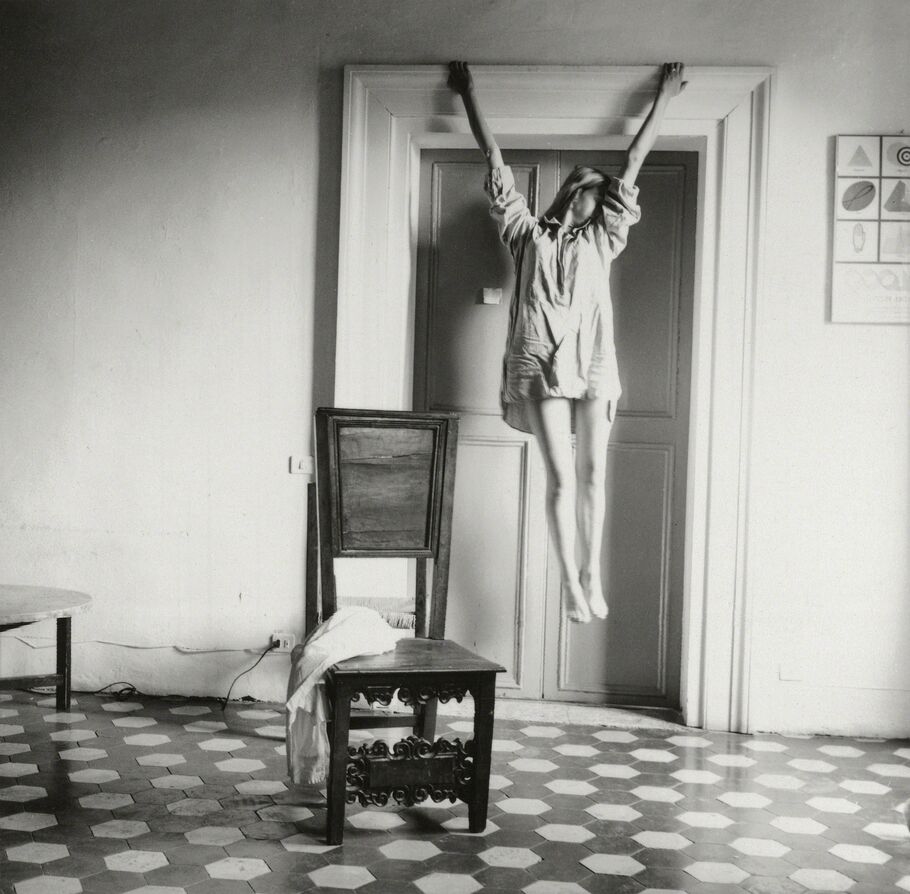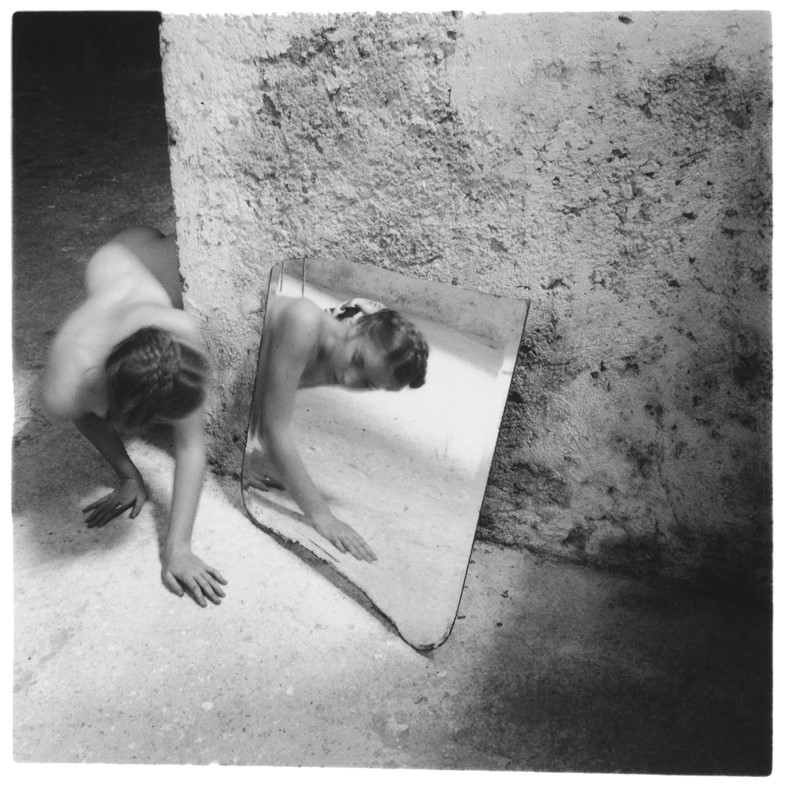1. I was both spooked and impressed by Woodman's work. The majority of her pictures feature naked women in motion or blurred and merging with their surroundings. They seem melancholy and haunted, and that vulnerability seems to reflect Woodman's own state of mind.

2. I would categorize Woodman's work as storytelling female portraiture photography, because it isn't just a basic commercial headshot. Woodman poses her models with intention, and uses props, empty space, shapes/angles, to piece together a cohesive narrative with a purpose that is open for interpretation.
3. Although it is not photography, some of Woodman's work reminds me of the short story The Yellow Wallpaper, by Charlotte Perkins Gilman. It follows the story of a woman trapped within the cult of domesticity, which is represented by the yellow wallpaper in her room that she is metaphorically trapped within. Some of Woodman's photos capture women who are literally trapped behind ripped wallpaper that they are seemingly trying to escape from. My interpretation of these photos is similar to that of Gilman's novella: both works feature women who feel trapped by their circumstances. Those circumstances in terms of Woodman's work could be many things, but it seems to me that she is struggling with issues in mental health due to the pressures women faced in her current society. I like both works, but I prefer Woodman's, as it is visual and interesting to look at.



4. If someone remade Woodman's work today, it would more openly portray women's freedom, rather than vulnerable, haunted, sad women who are only in motion in confined spaces, alone.

5. I love the quote at the end of the slideshow, because I think it perfectly sums up the concept of perception. No matter how long or hard we interpret and analyze an artist's work, it will only end up being our personal interpretation. Everyone views themself and others' work differently based on their own experiences. Woodman's work is her own, but millions of different versions exist in the minds of her audience.

Comments
Post a Comment